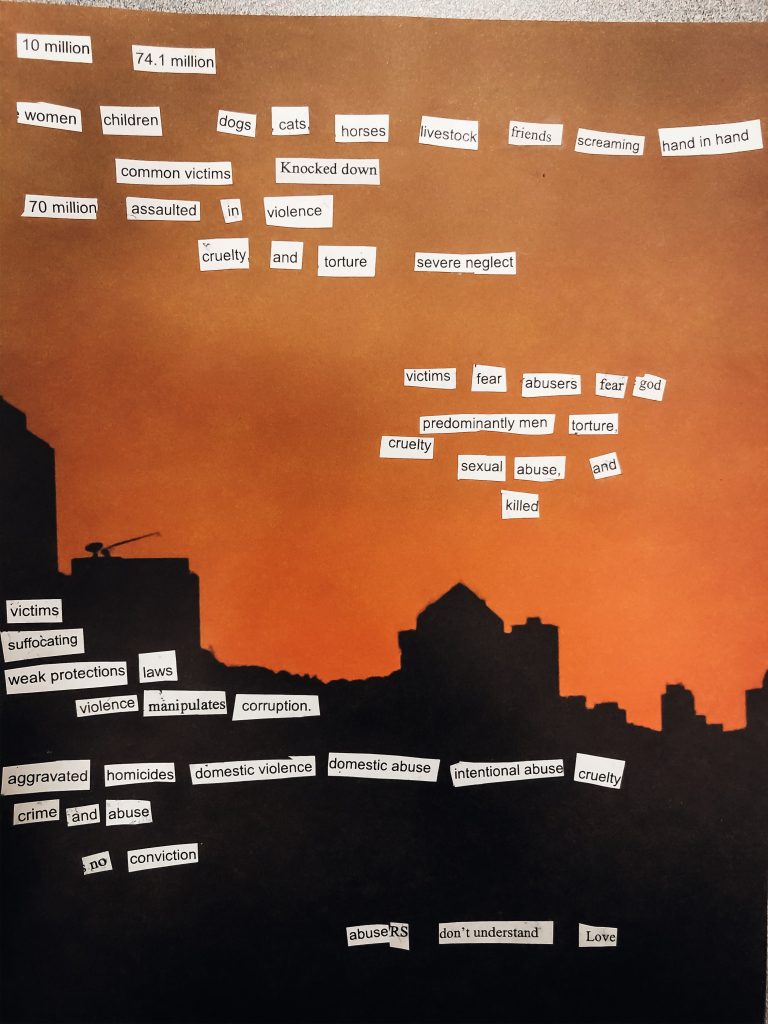By Kaylee Oliver
In The Woman Warrior, the “no name woman” mentioned in chapter one is, in a literal sense, the narrator’s aunt who committed suicide. However, Maxine Hong Kingston included this chapter in the novel to speak about the repression of women’s sexuality in traditional societies and the shame that accompanied transcendence of the expectational boundaries. Kingston writes, “The old woman from the next field swept a broom through the air and loosed the spirits-of-the-broom over our heads. ‘Pig.’ ‘Ghost.’ ‘Pig,’ they sobbed and scolded while they ruined our house” (5). In this emotional scene, she describes the way the townspeople addressed an illegitimate child by destroying the livelihood of the family in which it existed. For the reader, this provides an insight into the degree of shame and disrespect that was bestowed upon a woman who had sex outside her marriage, without consideration of her circumstances. Kingston then goes on to create an imaginary life for her forgotten aunt and what may have led to her demise. She proposes rape, a narrative that supports her aunt’s innocence in getting pregnant. This shows that even though the narrator is living in America and has adopted a more modern acceptance of sexual liberation, she still makes excuses to provide a more “acceptable” narrative of what may have happened to her aunt. This shows the long lasting effects of a society in which women were suppressed and less than equal to men, and how the harmful values (such as wives being able to follow their dreams, not be subservient to husbands) carried on through generations.
Kingston’s narrator also stresses the importance of vanity in Chinese culture, writing, “She may have been unusually beloved, the precious only daughter, spoiled and mirror gazing because of the affection the family lavished on her” (10). This passage is ironic in itself, knowing that sons were historically valued over daughters and this is suggestive of a daughter as a prized possession, perhaps a nod to the love parents could share with their children beyond gender roles. The narrator discusses how her aunt may have done her hair, how men were attracted to her, and how she may have spent her days, all which became obsolete when she fell pregnant outside of her marriage. This shows that, above all, women were expected to be submissive to the expectations of society that they would not live their own lives, but rather conscious that every move made was for the sake of their family’s reputation.
By including this chapter in the novel, Kingston sheds light on an issue that goes beyond all cultural barriers and is present consistently throughout history: inequality of the sexes. While her husband was away, no-name woman was expected to sit home quietly and await his return. Kingston’s representation of a woman driven to desperation by shame for her sexual endeavors, even without explanation, is one that outstands the test of time. The story is relatable to readers even in the twenty first century. This passage about a woman forgotten for her sins and erased from the hearts of her loved ones is intended to evoke empathy and provide a thought path that leads readers to see the errors of society in our past.
Discussion questions: What do you know of women’s roles in Chinese society over the course of history?
How might no name woman’s story be different today?
How does Kingston’s story of no name woman relate to other harmful expectations of women throughout history?
Work Cited:
Kingston, Maxine Hong. The Woman Warrior. Vintage International, 1976.

